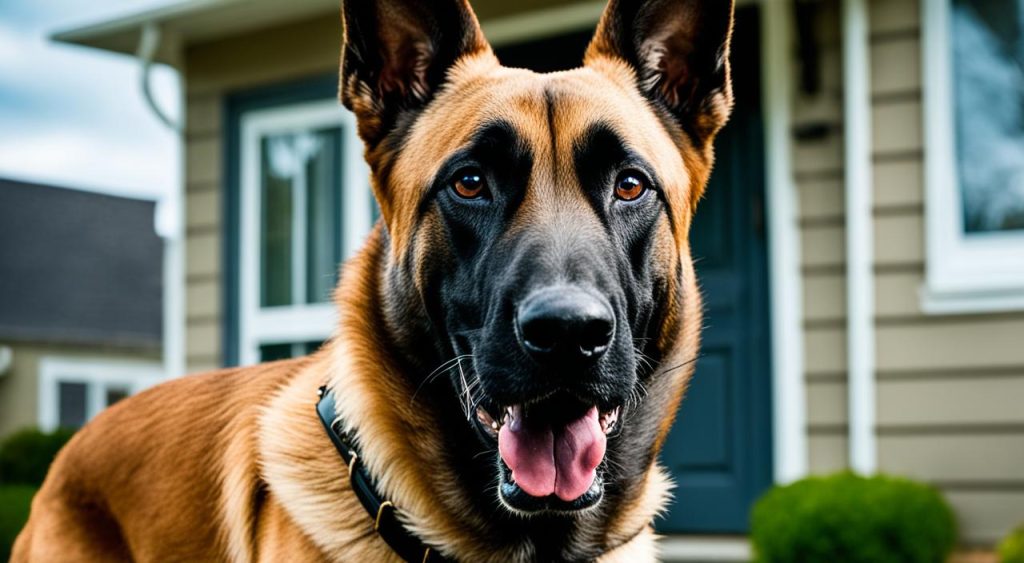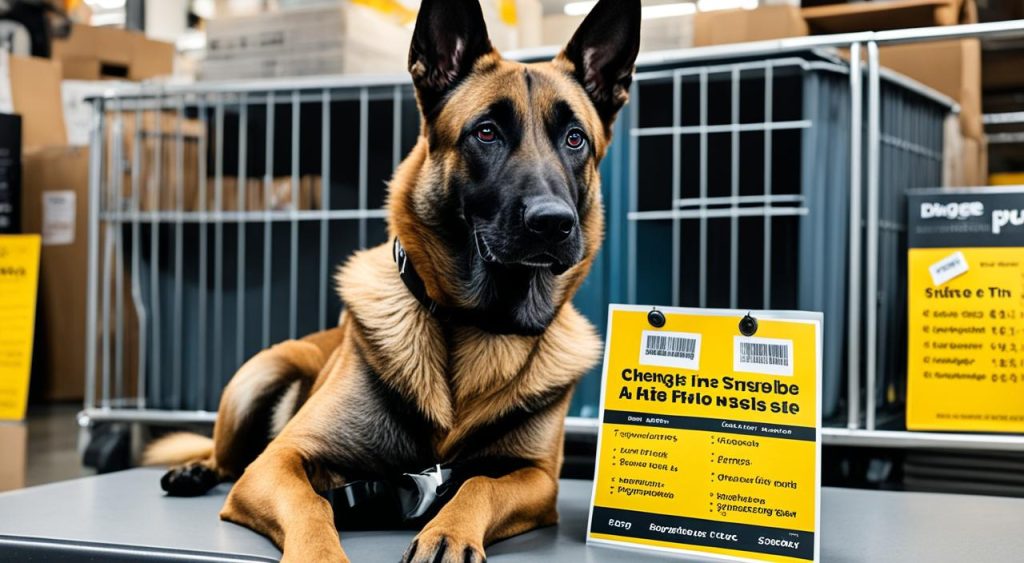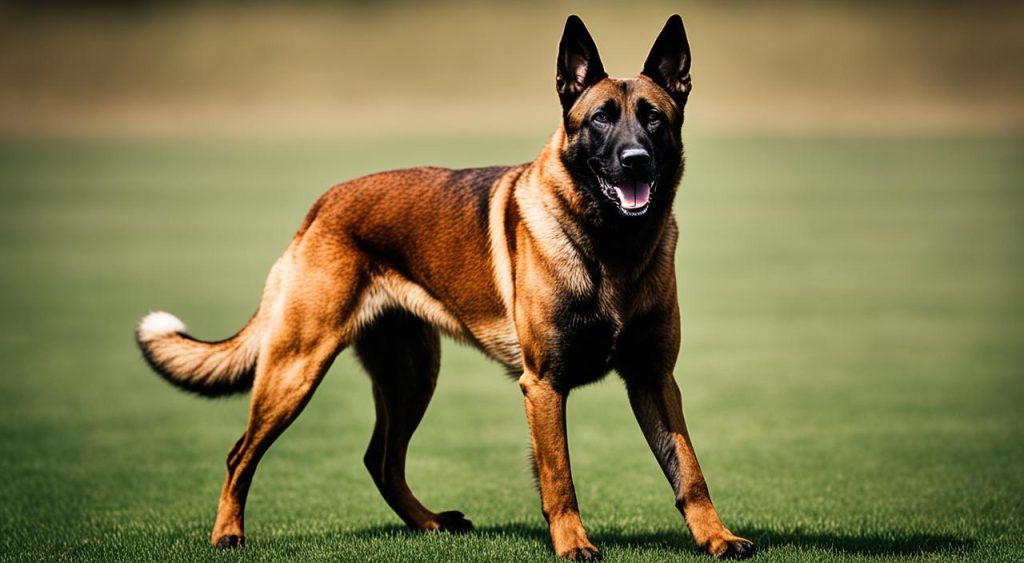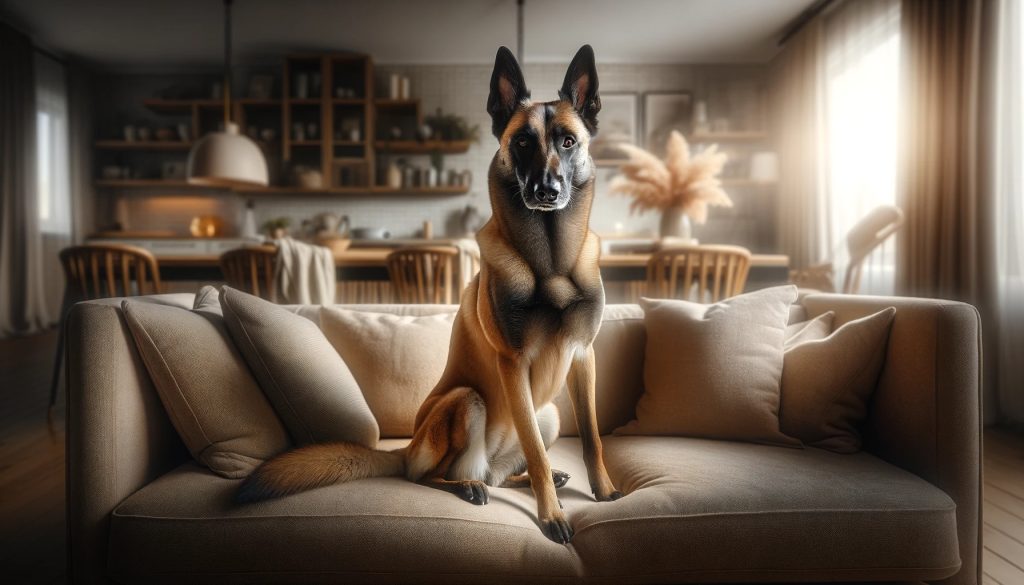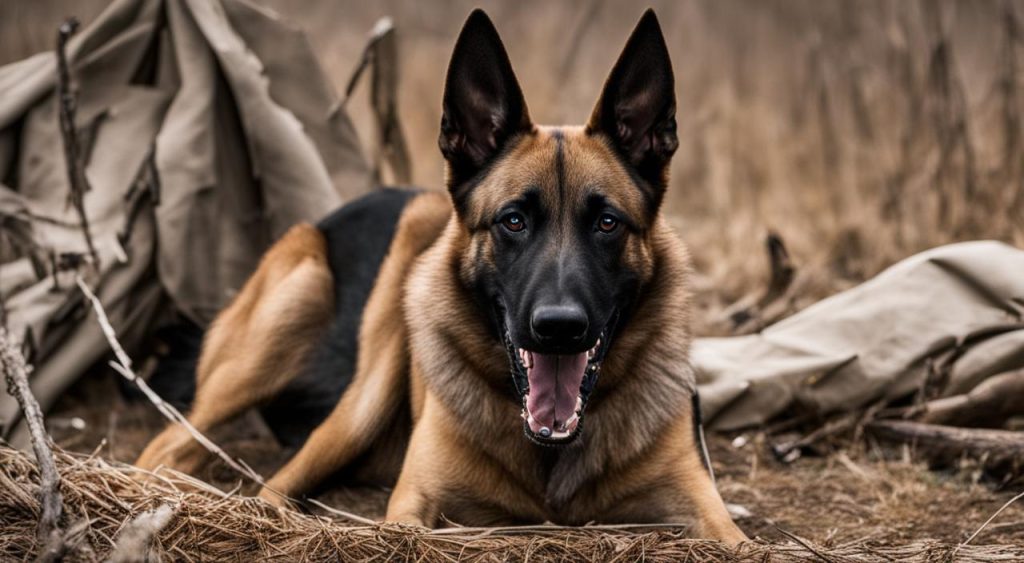The Belgian Malinois is a popular breed that has garnered attention in recent years, thanks to its appearances in the media. If you’re considering adding a Belgian Malinois to your family, it’s important to weigh the pros and cons and consider various factors before making a decision.
Belgian Malinois dogs have a unique temperament that can make them suitable family companions, but they also come with specific challenges. Understanding their temperament, energy levels, and compatibility with family dynamics is crucial in determining if they are the right fit for your household.
In this article, we will explore the factors to consider when getting a Belgian Malinois as a family dog, their temperament in a family setting, and how they interact with children. By the end, you will have a better understanding of whether a Belgian Malinois is a good match for your family.
Key Takeaways:
- Consider the Belgian Malinois temperament and energy levels before getting one as a family dog.
- Assess if the Belgian Malinois is a good fit for your family dynamics and lifestyle.
- Understand the challenges and rewards of owning a Belgian Malinois as a family pet.
- Ensure proper socialization and training for a harmonious relationship between the dog and your family.
- Be prepared for the commitment and responsibility of owning a high-energy breed like the Belgian Malinois.
Getting to Know the Belgian Malinois
The Belgian Malinois is a well-balanced and square dog with a strong and agile build. According to the breed standard, they should exhibit confidence and a desire to work. They are naturally protective of their owners and property but should not be overly aggressive. Understanding the breed’s characteristics and temperament is crucial in determining their suitability for a family environment.
Different Roles of the Belgian Malinois
Belgian Malinois dogs are versatile and excel in various roles, thanks to their exceptional temperament and skills. There are distinct differences between work lines and conformation lines, each with its own unique traits and abilities.
Work Lines vs. Conformation Lines
In the world of Belgian Malinois, work lines and conformation lines are prominent. Work lines are specifically bred for their working abilities, making them highly active and driven. They thrive in environments that require constant stimulation, such as law enforcement or search and rescue operations. These dogs possess remarkable endurance, agility, and focus, making them ideal for rigorous jobs that demand mental and physical strength.
On the other hand, conformation lines are more focused on performance abilities and appearance. They tend to have a calmer demeanor and are often seen competing in companion sports like obedience, agility, and rally. While still possessing the intelligence and drive of the breed, these Belgian Malinois may be more suited for those who desire a companion that can excel in competitive events without the intense energy levels found in work lines.
Belgian Malinois in Protection Sports
Due to their protective nature and strong instincts, Belgian Malinois are highly sought after in protection sports. These dogs excel in activities such as schutzhund, IPO, and French Ring, where they showcase their natural abilities for obedience, tracking, and apprehension. Their sharp focus, athleticism, and keen senses make them ideal competitors in these demanding sports.
Belgian Malinois in Working Environments
Belgian Malinois are also highly regarded for their working abilities in various fields. They are often employed in military and police forces around the world, using their remarkable intelligence and drive to assist in searches, tracking, and apprehension. These dogs thrive in dynamic and high-stress environments, where their strong work ethic and loyalty prove invaluable.
Belgian Malinois for Farm Chores
Although known for their exceptional working capabilities, Belgian Malinois can also be versatile farm dogs. Their strong herding instincts and intelligence make them well-suited for assisting with various farm chores, such as herding livestock or guarding the property. They strike a balance between their work drive and the calmness required for managing and protecting livestock.
Belgian Malinois in Companion Sports
Belgian Malinois’ intelligence and athleticism also make them highly competitive in companion sports. Whether it’s agility, obedience, or flyball, these dogs are eager to please and quick to learn. They enjoy the mental and physical stimulation that these sports offer while still having a strong bond with their human companions.
Belgian Malinois dogs are remarkable in their adaptability and versatility. Their different roles and specialized abilities cater to a wide range of needs and preferences. Whether you’re looking for a devoted working partner or an active companion, the Belgian Malinois offers an excellent choice.
Testimonials from Experienced Malinois Owners
Testimonials from owners of Belgian Malinois provide valuable insights into the challenges and rewards of owning this incredible breed. These personal experiences shed light on the high-drive and active nature of Malinois, as well as the dedication required to ensure their well-being and happiness.
“Owning a Malinois has been both rewarding and demanding. Their high energy levels can be a challenge, but with the right commitment, they can excel in various activities. Regular mental and physical exercise is key to keeping them content.” – Sarah, Malinois owner
Many owners highlight the need for mental and physical stimulation to prevent destructive behavior. Without proper exercise, Malinois may resort to chewing and other destructive habits. However, with adequate training and exercise, they can be wonderful house pets.
“My Malinois, Max, keeps me on my toes. He’s a fantastic companion, but if I neglect his exercise routine, he becomes restless. It’s essential to provide opportunities for him to burn off energy through agility training and long walks.” – James, Malinois owner
Experienced owners emphasize that Malinois thrive in an active and engaged environment. They require outlets for their high drive, such as obedience training, agility courses, or even scent work. It is through these activities that their intelligence and work ethic truly shine.
If you’re considering a Belgian Malinois as your next canine companion, take the time to understand their needs and evaluate if their energetic nature aligns with your lifestyle. These testimonials give you a glimpse into the challenges and rewards that come with owning a Malinois.
Evaluating Your Family’s Lifestyle
Before considering a Belgian Malinois as a family dog, it is crucial to evaluate your family’s lifestyle. These dogs thrive in active homes where they can participate in regular vigorous activities and receive ample mental and physical stimulation.
If you are a working parent who is away from home for long periods, owning a Malinois may not be the best fit for your family. These dogs require companionship and engagement throughout the day, and leaving them alone for extended periods may lead to behavioral issues.
On the other hand, if you have a stay-at-home spouse or someone who can dedicate their time to the dog’s needs, a Malinois may be a great fit. These dogs form strong bonds with their owners and thrive on constant interaction and mental stimulation.
Evaluating your family’s lifestyle and considering the time and energy commitment required by a Malinois is crucial in ensuring a harmonious and fulfilling relationship between the dog and your family.
Quote:
“Having a Malinois as part of our family has been incredible. As a stay-at-home spouse, I’m able to provide the time and attention they need. They have become an integral part of our active lifestyle and have brought us so much joy.” – Jennifer, Belgian Malinois owner
Belgian Malinois as Family Protectors
The Belgian Malinois breed possesses natural protective instincts and serves as an excellent family protector. With their strong sense of loyalty, these dogs are committed to ensuring the safety of their families at all times.
Their alertness and vigilance make them highly effective in identifying potential threats and reacting instantaneously. The Belgian Malinois can act as a living alarm system, providing an advanced warning to their owners.
“Belgian Malinois dogs have an innate ability to sense danger and protect their loved ones. They possess an unwavering dedication to their families and will do whatever it takes to keep them safe.” – Experienced Belgian Malinois Owner
However, it is essential to channel and train their protective instincts appropriately. Training ensures that their responses to threats or perceived danger are controlled and proportionate.
With proper guidance and socialization, the Belgian Malinois can differentiate between real threats and harmless situations. This ensures that their protective behavior is focused on genuine risks, providing a secure environment for the entire family.
The Belgian Malinois is more than just a loyal companion; they serve as the ultimate family protectors, combining their natural instincts with their unconditional love for their owners.
Belgian Malinois’ Temperament with Other Dogs
The socialization and temperament of a Belgian Malinois play significant roles in their interactions with other dogs. When properly socialized from a young age, Belgian Malinois can get along well with other well-trained dogs, forming strong bonds with those they live or work with.
However, it is important to note that Belgian Malinois may exhibit dominant behavior within a pack. This dominance stems from their herding instincts and their natural inclination to maintain order. Understanding and managing their dominant tendencies can promote positive interactions with other dogs.
“Proper socialization and training are crucial for Belgian Malinois to have harmonious relationships with other dogs. Early exposure to a variety of social situations, including positive interactions with different breeds, sizes, and temperaments, can help them develop appropriate behaviors and reduce any excessive dominance.” – Experienced Belgian Malinois Owner
Creating opportunities for controlled interactions with other dogs can help the Belgian Malinois learn to navigate social dynamics effectively. Gradual introductions, supervised playdates, and structured training sessions can contribute to their socialization process.
Understanding Belgian Malinois Dominance
Belgian Malinois’ dominant behavior in packs is rooted in their herding heritage. They have a natural instinct to establish an order within the group and may assert their dominance to maintain control.
When introducing a Belgian Malinois into a pack or multi-dog household, careful monitoring and guidance are essential. Providing clear rules and boundaries for all the dogs and proactive training can help prevent conflicts and maintain a harmonious environment.
It’s important to note that dominance in Belgian Malinois does not necessarily equate to aggression. With proper socialization and training, they can coexist peacefully with other dogs and form strong bonds.
Tips for Socializing Belgian Malinois with Other Dogs
- Early socialization: Start socializing your Belgian Malinois to other dogs from a young age, exposing them to different breeds, sizes, and temperaments. This helps them learn appropriate social behavior and reduces the likelihood of dominance issues.
- Supervised interactions: Monitor interactions between your Belgian Malinois and other dogs, especially during the initial stages. Keep a close eye on their body language and intervene if necessary to prevent any conflicts.
- Structured training: Train your Belgian Malinois to have good manners and respond to commands, both around people and other dogs. This establishes a solid foundation for their behavior and enhances their social skills.
- Positive reinforcement: Use positive reinforcement techniques, such as treats and praise, to reward desired behaviors during interactions with other dogs. This reinforces positive associations and helps your Belgian Malinois build confidence in social situations.
By following these tips and investing time and effort in socialization and training, you can ensure that your Belgian Malinois has positive relationships with other dogs and can confidently navigate various social environments.
Conclusion
After considering the various aspects of owning a Belgian Malinois as a family dog, it is crucial to make an informed decision. These dogs can be loving and loyal companions, but they require responsible ownership and commitment to their high-energy needs.
To ensure a harmonious relationship between your family and a Belgian Malinois, extensive exercise, mental stimulation, and training are essential. Daily activities like long walks, runs, and interactive play sessions will help keep them physically and mentally engaged.
Responsible ownership involves providing a safe and stimulating environment for your Belgian Malinois, as well as consistent training and socialization from an early age. These steps will help promote good behavior and prevent any potential challenges that may arise due to their protective instincts.
In conclusion, a Belgian Malinois can be a great family dog if you are willing to make the necessary commitment. By understanding their characteristics and meeting their needs, you can enjoy a rewarding and fulfilling partnership with this intelligent and energetic breed.

